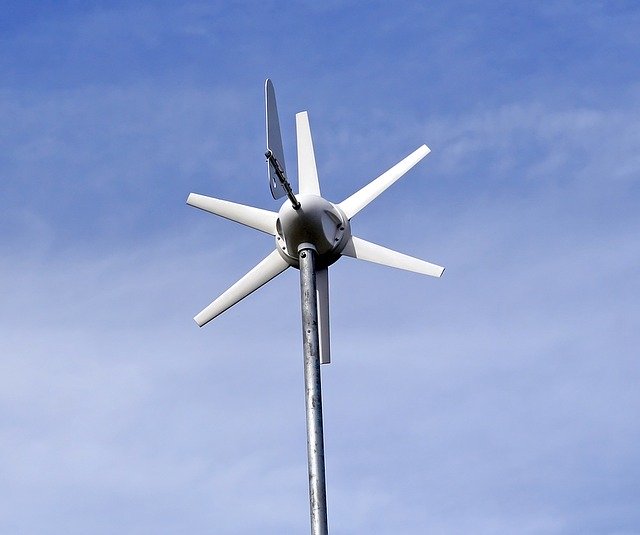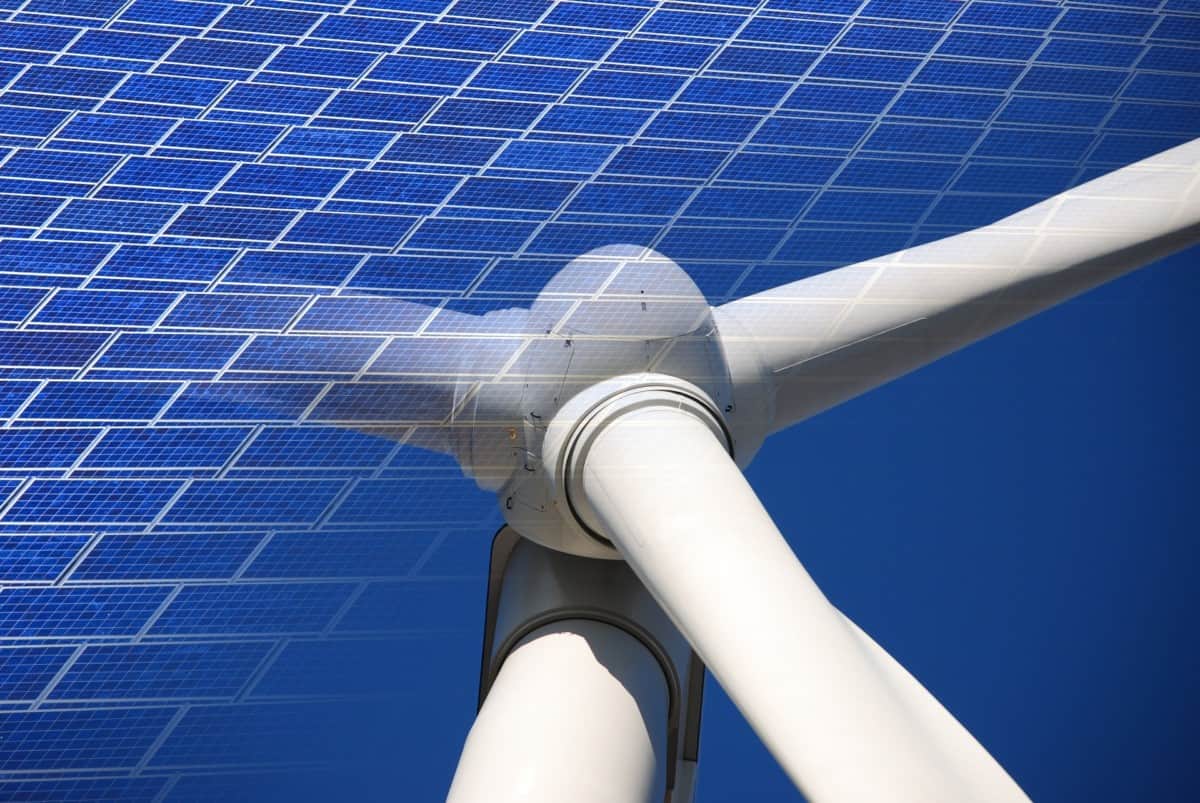Wind V Solar Energy, Which Should You Install?
Is there a significant difference between wind v solar energy? Let’s firstly start by looking at each energy source individually and then come to a conclusion at the end.
We shall also discover which is more efficient, a solar panel or a wind turbine.
Introduction to Solar Energy
Solar energy is the collected radiant light and heat that comes from the sun. It is normally created as a result of harnessing technologies such as solar panels. When the sunlight rays hit the photovoltaic cells found in the solar panels, the cells in the panels convert the radiation into electricity.
Solar energy’s principle relies heavily on the photoelectric effect. This simply means that there are certain types of materials that can produce energy when they’re exposed to the sun’s light.
Advantages of Solar Energy
- Environmentally-friendly: solar is a renewable energy source that’s friendly to the environment. It doesn’t cause degradation or release toxic substances into the air hence it’s safe.
- Massive power: the sun is massive and we as humans can classify it as an eternal energy source that’s limitless.
- Better flexibility: you can install solar panels anywhere as long as the panels aren’t blocked from the sun’s rays. This could be on a roof, ground, etc.
- Easy maintenance: the only management you have to do is to ensure that no debris or shadow blocks the solar panels. It should be noted that you can use the panels for more than 20 years without considering replacement.
- Reliable: you can 100% rely on solar energy, whether it’s a sunny or cloudy day. In addition to that, you don’t have to worry about the sun not showing up because the sun usually rises every day.
Cons of Solar Energy
The panels can easily get damaged: strong winds, broken branches, and tornadoes are some of the things that can easily damage solar panels. To protect them and get value for your money, you have to insure your solar panels.
It depends on sunshine: the effectiveness of this type of renewable energy heavily depends on the sun. Note that this type of energy, unlike wind, doesn’t collect anything at night. In addition to that, there is low energy collection during rainy or cloudy days.
Note: you can only install solar panels on specific types of roofs. This is because orientation and the angle of the solar panels are all important in the collection of the sun’s energy. Besides that, panels generate significantly low electricity compared to wind turbines.
You can read more about Solar Energy in the home as I have an article named
How Solar Energy Works Diagram
Introduction to Wind Energy
It’s a mechanical type of energy that’s usually generated by wind turbines. The wind turbine consists of a tower that’s usually painted to resemble the natural surroundings. Besides that, there is a strong foundation for stability, nacelle that carries the generator, and the rotating blades.
Wind energy is quite popular in the US. Out of the many sources of renewable energy, wind accounted for over 20% in 2017 in the US alone. This is quite a big leap based that the use of wind turbines started to pick up just recently.
Advantages of Wind Energy
- Environmentally-friendly: wind is a renewable source of energy hence it is considered eco-friendly. It doesn’t cause any type of pollution since it doesn’t release toxic wastes or gases.
- Highly effective: reports indicate that if the wind speeds are high, one wind turbine can effectively generate enough electricity for almost 6000 households! This means that its potential is several times higher than other sources of renewable energy e.g. solar energy. Why not read my article, How do Wind Turbines Work for further information.
- High Conversion Rate: wind turbines have one of the highest energy conversion rates that’s more than a half.
- Cost-effective: even though the initial costs are quite high, wind turbines can significantly reduce your energy costs in the long-run due to the cheap operational costs.
Cons of Wind Energy
- Intermittent supply: wind doesn’t flow at the same speed for a long time. It constantly fluctuates and this generally makes it hard to effectively meet the energy demands for most people. It’s only an ideal source of energy for environments that are constantly windy. It’s worth noting that the turbines can’t effectively produce energy if there is no wind.
- Dangerous for birds: reports indicate that wind turbines are big threats to birds. As a matter of fact, places where the wind turbines are installed lead to a high mortality rate of birds.

Note: besides those two cons, wind turbines are susceptible to damage from the wind itself and lightning. Turbines are also very rare in cities because you can’t install them in densely populated areas since they need lots of space. And if you are going to install the turbines in remote places, then you need to install transmission lines as well. Overall, this is a costly and demanding process.
Solar panels vs wind turbines: Which One is The Best?
These two sources of energy are both considered clean and natural. Besides that, they are renewable. However, how do they fare in comparison to one another? Well, both of them have special features that make them stand out.
Installation Cost
This depends on the number of solar panels and wind turbines you want to install.
- Solar: it should be noted that there are several types of solar systems. They come in different sizes, designs, and wattage. This provides versatility in that you have the option of choosing the size of the solar panel you want depending on your budget.
- Wind turbines: size is also a crucial factor when it comes to wind turbines for residential use. Besides that, you also have to consider certain aspects such as permits, local zoning laws, and the height of the tower in addition to various interconnection charges. Generally, this type of renewable energy is much more expensive. However, there are those who argue that it’s cost-effective in the long run.
Energy Generation Process
The energy generation process of wind v solar energy is quite different.
- Solar: panels generate energy by collecting the sun’s rays. The rays contain photons and when they hit the cells of the solar panels, they knock off the electrons. This is, thereafter, converted to electricity. The higher the number of solar panels, the more energy is produced.
- Wind: when wind power hits the turbines, their propeller blades usually turn around. Consequently, the rotation spins the generator that then ends up generating electricity. As long as they are more wind currents, then you have a better chance of collecting more wind energy.
Reliability
- Solar: you can collect this type of energy on both sunny and cloudy days. Solar panels are usually designed with a high level of efficiency and this means that energy can be collected throughout the year. Even during overcast days, there are solar panels with cell technology that can efficiently produce electricity.
- Wind: when it comes to the reliability of wind vs solar, wind seems to lag behind. At a minimum, you will need at least 12 mph wind speeds in order to collect energy. Besides that, the terrain is also important in determining the placement of wind turbines because the direction of wind flow is important.
Efficiency
There is a great difference when it comes to determining the efficiency of solar vs wind energy.
- Solar: this type of renewable energy has a conversion rate of around 23%. That’s the average amount of sunlight that can be converted to energy.
- Wind: on average, wind turbines usually convert half or more of the wind that hits them to energy. While this might seem to be better than solar energy, the problem with wind is that it doesn’t blow continuously at the same speed. This definitely makes it difficult to estimate the correct energy output.
Note: comparison studies done on wind v solar energy indicate that in terms of efficiency, solar panels are great alternatives in the long run. Over a 12 month period, solar panels can collect almost 5 times more energy than wind turbines.
Maintenance
You now fully understand the cost of installing such systems and now it’s important to consider the maintenance requirements of solar vs wind energy.
- Solar: once you have identified the appropriate place to install (roof or ground) solar panels, the maintenance process is usually minimal. You have to ensure that there are no shadows blocking the panels or debris such as dead leaves. Overall, you have to ensure that the surface of the panels receives maximum sunlight exposure.
- Wind: the turbines in this case have to constantly move in order to produce more power. Additionally, the maintenance process requires frequent monitoring and replacement of the moving parts. This is because they easily wear and tear down with time. In case there is a complex issue, then you have to seek the services of a professional.
Wind Vs Solar Energy: The Bottom Line
These two are among the best sources of clean energy. Solar and wind energy are renewable hence you can comfortably rely on them in the long run. But between the two, which one should you consider installing?
When it comes to cost, maintenance, and reliability, solar is a winner. You can conveniently install solar panels for small scale use and still get a sufficient amount of energy.
Even though wind turbines have higher energy conversion, the whole process from installation to energy generation is quite complex. In addition to that, wind turbines are expensive and the moving parts need constant maintenance.
More information can be found at energy.gov
You may also enjoy reading these related posts
How are Solar Panels Installed
Is It A Good Idea to Buy Used Solar Panels?
Build A Low-Cost DIY Solar Panel System Quickly
Recent Posts
The Future of Wind Energy The future of wind energy is set to play a critical role in addressing global energy needs while combating climate change. As renewable energy sources like wind and...
Misconceptions about Wind Energy This article Misconceptions about wind energy will debunk common myths surrounding wind energy and clarify the facts based on scientific research, studies, and...


